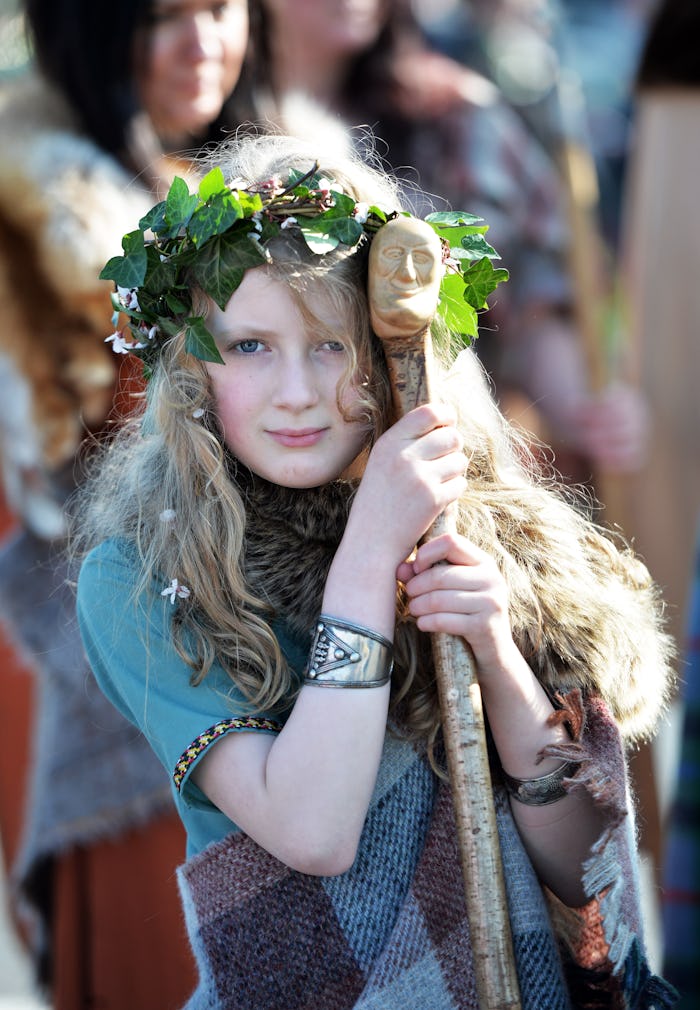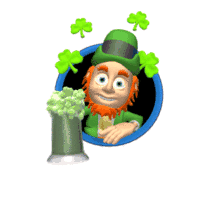Life

Share These Leprechaun-Free Irish Legends With Your Kids On St. Patrick's Day
St. Patrick's Day is approaching, a day for which I get my Irish-American children pumped up to celebrate their heritage. Of course, practically speaking, American St. Patrick's Day is a poor start point because, based on the way it's celebrated, you'd think being Irish is getting aggressively drunk and dressing up like a cereal mascot. But Ireland's is a rich and fascinating culture. I couldn't possibly get into it all in a single article, so today I thought I'd talk about Irish folklore to share with your kids, because there's so much more to it than leprechauns.
As with any folk tale, there's a ton of overlap with stories from other cultures, variations within a culture, and contention. So consider this more of a primer than a definitive list.
Also? Full disclosure, people: Irish folklore can get dark AF. (I mean, that's basically true of most folklore, seeing as it originates from a time when the world was less understood and even scarier than it is today.) As such, many of the figures I'm going to describe to you in this article do not wish you well, mainly because most of the supernatural forces in Irish mythology are far from benevolent. So if your kid is very sensitive, like my son, maybe proceed with caution. If, however, your child is a macabre little ghoul, like my daughter, well strap in because you're both in for a spooky good time. Point is: know your audience and maybe go ahead and leave out some of the spookier stuff if you have to.
1Tuatha Dé Danann
The Tuatha Dé Danann were originally considered the gods of the Celtic pantheon (the way the Olympians were in Ancient Greece), each with their own name and specific specialty. Legend has it they arrived in Ireland millennia ago and brought with them powerful magic. They lived in their own realm, known as "the Otherworld" but interacted with humans when they felt like it. As Christianity took hold in the country, the pagan gods and goddesses gave way to "Capital G God," but that didn't mean the Irish were keen to give up the the Tuatha Dé Danann entirely. Over the centuries, they moved from god-status to merely "supernatural" status — a sort of downgrade — to what might more commonly be thought of as fairies or Aos Sí.
2Merrows
A merrow is essentially a mermaid or merman, as Ireland's Eye explained... but with a twist. Female merrow would be familiar to those of us who grew up obsessed with Ariel: Their top halves are human and their bottom halves are like the tails of fish. Male merrow, on the other hand, are more like the "creature from the black lagoon" and are quite scary. Both genders possess something called a cochallin draíochta or "magical little hood," which gives them the power to live underwater. If they were ever to lose it, they would be exiled to land until they could find it again.
3Selkies
Full disclosure — I grew up with stories of selkies and they're definitely my favorite of the Irish magical creatures. A selkie may look like an ordinary seal but, when they shed their animal skin they become a beautiful human. According to legend, whoever can take a selkie's discarded seal skin will have the power to command them. In many stories, sneaky human men will take a selkie to wife in this way... but just as often, the selkie will find her coat again and return to the sea. (A great example of this common myth can be seen in this clip starting at 1:30 and continuing into the next video... my husband and I may or may not have convinced my children that I am a selkie and they may or may not have been caught looking for my seal skin... )
4Fear Gorta
If you see a fear gorta, head over to Costco and stock up on some non-perishables, because you've got a famine coming. Rising from a patch of grass, these emaciated looking, human-like creatures wander the earth during times of hunger, seeking out the generosity of mortals. Those who show kindness to a fear gorta in the form of alms may be granted good fortune by this supernatural being. I feel like there's a lesson there for the kiddies about always looking out for the less fortunate... because even if it weren't just the right thing to do, you never know when one of them is going to be a wish-granting spirit.
5Dullahan
This will be familiar to anyone who grew up watching The Legend of Sleepy Hollow every Halloween. Considered to be a type of fairy, the Dullahan isn't the wish granting-tutu wearing type, as Cracked explained. Nah. This is Ireland, where fairies are often pretty damn freaky, and the Dullahan is a terrifying headless man decoratively covered in human bones that roams around on a dark horse and, if he calls your name, you die.
I told you: it gets dark, dudes. Welcome to Ireland.
6Bodachs
A bodach is a fairy creature that seems to exist for the exclusive purpose of frightening little children to keep them in line — a boogeyman figure, more or less. Because times may change. Stories may change. But one thing that never changes is a parent's desperate need to get their child to behave, even if it means terrifying them with stories of kidnapping goblins.
7Púca
Have you ever seen Lilo and Stitch? Púcas are sort of like Stitch's black-or-white-furred, Irish cousin — they're shape-shifting tricksters who can either freak you out or make your dreams come true. It all depends on how you treat them. Generally coming in the form of a horse or a hare (though they can come in any form they wish), púcas can speak human tongue, and it behooves you to follow any advice they give. These little guys are also associated with the festival of Samhain, which we know as its more American cousin, Halloween. Leaving an offering for a púca on Samhain will bring you good luck.
8Changelings
When the fairies take a shine to a particular human — usually a baby or a particularly beautiful adult — they would sometimes steal them, leaving a changeling in its place. (Fairies are like honey badgers: they DGAF, they just take what they want!)
The changeling would look just like the human child, but be... different. Sort of odd. As such, whenever one of my brothers or sister or I started acting obnoxious or out of sorts, my mom would accuse us of being a changeling.
In some of the stories I was told, the changeling was meant to be a replacement child. In others, they were just set on Earth for long enough to distract the parents from realizing their baby has been spirited away to the Otherworld. So... those are sort of scary stories for kids... but if you just leave it at a weird swap, you can maybe convince them they're a fairy... ?
9Banshees
If you're anything like me, you've told your children to stop "wailing like banshees," when they're getting shrieky... but what's a banshee, exactly? Descriptions of these fairy folk vary — anything from a beautiful virginal maid dressed all in white to a shrouded old woman washing clothes — but the one thing all the stories have in common is their "keening," which is a traditional Celtic lament for the dead. Banshees are said to be heard wailing these mourning songs before a death, according to Britannica, letting a family know that, for someone, the end was near... which, like, kind of convenient once you get past the spooky factor.
Again, it can get dark folks. Better save this one for an older child...
10Clúracháns

There's some debate about these little fairies who are said to hang out mainly in wine cellars: folklorists aren't exactly clear whether they're their own thing or if they're just leprechauns on a bender. Because, like leprechauns, clúracháns are said to be solitary, magical creatures that play tricks, guard gold, and make shoes, according to Celtic Life... but they're just usually totally wasted.
Which brings me to my final point: the folklore of Ireland is so much more complex and exciting than American St. Patrick's Day would lead us to believe... so rich, in fact, that even if we insist on celebrating the day as nothing more than a bro-y drinking holiday, we actually have the perfect mascot: the clúrachán! So if you're not going to take March 17 as an opportunity to actually engage in Irish culture, let's at least make the American version more accurate and celebrate by dressing up like clúracháns!